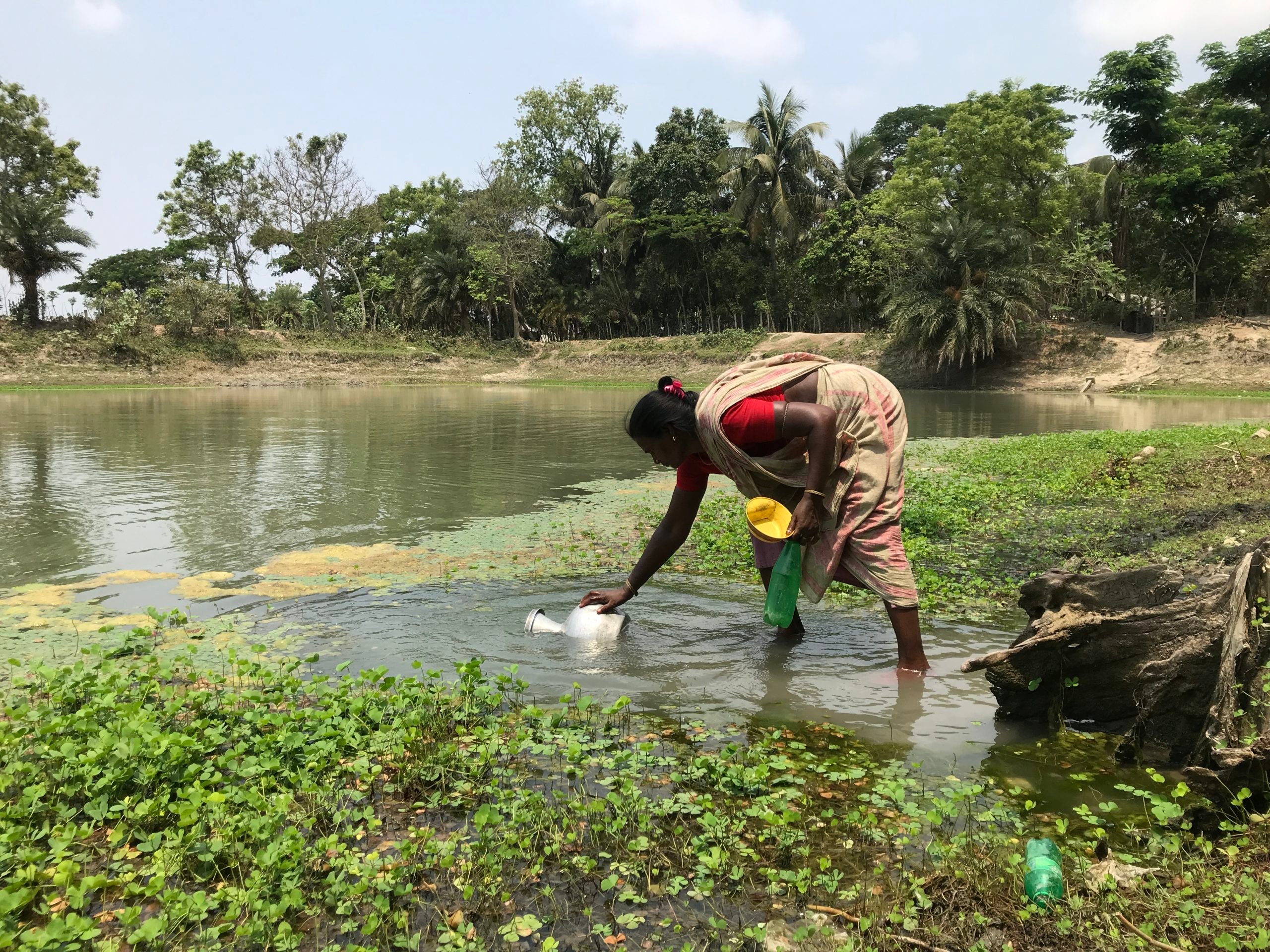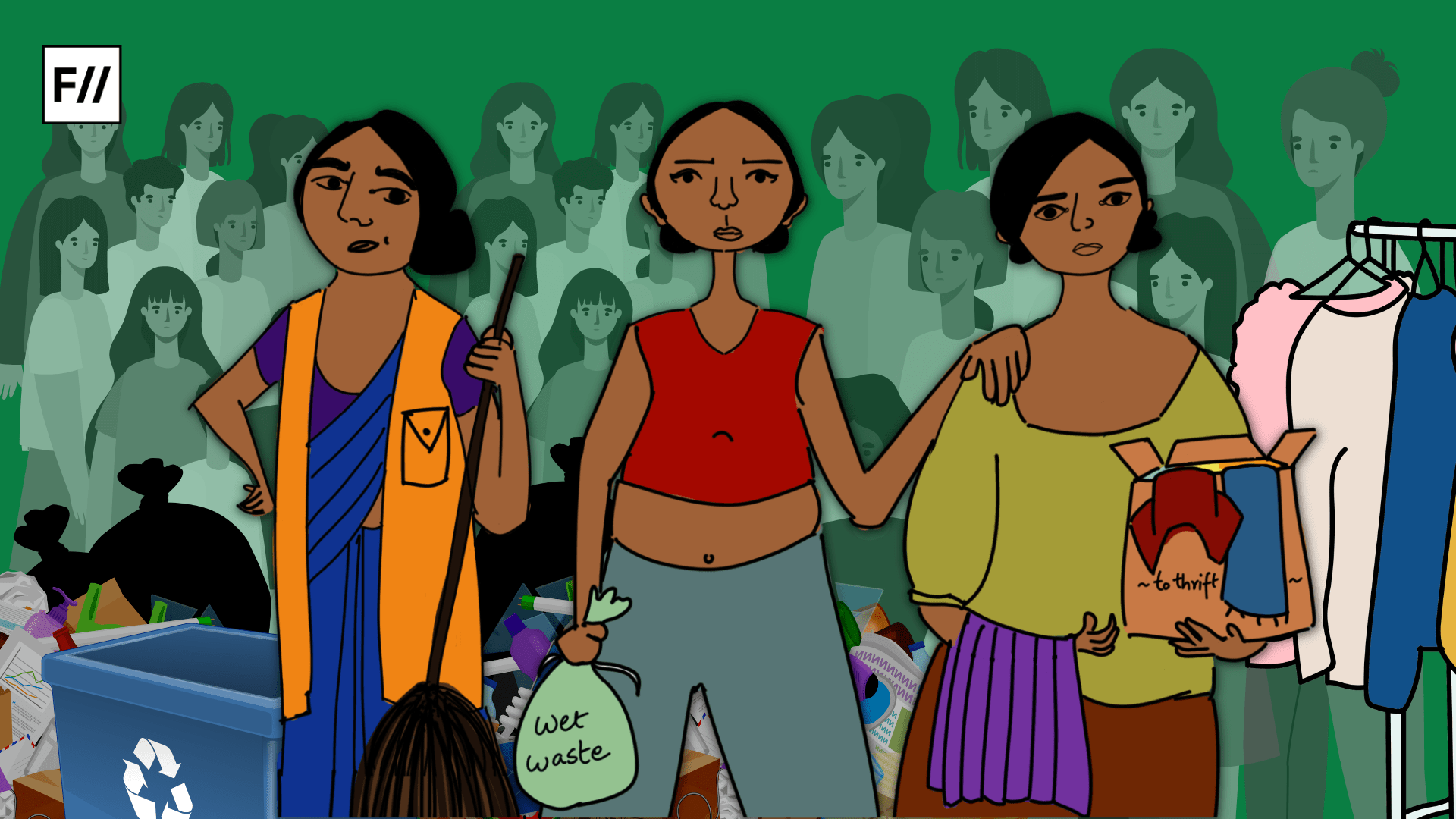Editor’s Note: FII’s #MoodOfTheMonth for July 2022 is Gender and Environment. We invite submissions on the many layers of this theme throughout the month. If you’d like to contribute, kindly refer to our submission guidelines and email your articles to sukanya@feminisminindia.com
The rapid climate change seen in the past decade has had its adverse effects on our surroundings as well as on our body systems. However, one thing that often goes unnoticed is how disproportionately this has affected women and gender minorities more than men all over the world.
This is owed to a heightened state of risks and vulnerabilities that women are exposed to, that compared to men, are far greater in degree as well as frequency. Apart from the social, cultural, and economic vulnerabilities that are further deepened due to a continuously degrading climate system, the most significant degradation that women face is that of their physical health.
It must be acknowledged that health is a factor that troubles women a lot more than men, given the fact that they undergo periodic menstruation and pregnancy. Gynaecological issues have therefore, always been a focus of study when it comes to adversities faced by women.

Climate crisis, socio-cultural and economic vulnerabiltiites of women
A greater portion of the poverty-stricken population of the world comprises of women. Having negligible, or mostly zero access to basic education, human rights, and healthcare facilities, the daily issues of women are hardly recognised with the intention of improvement.
Moreover, they depend on the local, natural resources for their routine lives. A degrading environment only adds to their degrading health factors which consequently affects their gynecological system and transfers into the babies that they bear.
Most women in rural areas have in fact been found to undergo the ‘double burden’ of being laborious workers out of their household, as well as being housewives and dutiful girl children within the household. With climate changes resulting in droughts and drying up of water resources, these women have to travel great distances to collect the natural resources that their livelihoods depend on.
Decreasing sources of clean drinking water becomes an aggravating problem for women in most of these places. The labour-intensive tasks only get more difficult and time-consuming for women, which deeply affects their overall health.
Rising sea levels, miscarriages and complications in pregnancies
With an increase in melting ice caps, there are consequent increases in temperatures. This rises the surrounding atmospheric pressure which inversely affects the surrounding sea levels. Several studies find that women living near sea coasts and rivers go through complicated pregnancies and more miscarriages than the women living on plains. This is owed to the rising sea levels, increasing salt levels in freshwater, and drinking water resources.
The heat waves seen in the recent past have been terribly harmful to women with regards to their gynacological health. Summers in general are also a lot more discomforting to women as several observations have proved. Women suffer more from yeast infections and UTIs (Urinary Tract Infections) in hot summers. Dietary habits that keep changing according to temperatures also impact periods, making them arrive early along with heavy bleeding
Scientists have studied pregnant women in coastal plains and concluded that these women are likely to miscarry 1.3 times more than the ones who live inland. This they say, is mainly because of the salt in the water that these women consume on a daily basis. It is of course, not their fault, as the root of the problem lies in global warming and rapidly increasing sea levels. Salty water flows into freshwater streams, river channels, and underground water reserves, contaminating not only the water, but also the surrounding soil.
This water full of unwanted salt is then sourced via wells, tube wells, etc., in villages. Sometimes, the water even turns reddish in some remote places due to the over saturation of salt in it. With no other alternative, this same water is used to cook food, wash clothes, bathe, and do other life activities.
Health campaigns from the U.K have also warned against the dangerous outcomes of excessive salt consumption. It is seen to cause hypertension and strokes among people in general, and obstetric problems like preeclampsia and miscarriages among pregnant women in specific.
Bangladesh is an example that has been victim to this condition for a long time. As a low-lying flood plain, once affected by the tsunami, the country is home to mainy villages that are contaminated with excessive salt in their soil and water. This is not to be seen in exclusivity as most places with rising sea levels are deemed to face the same outcome. The most tragic aspect of this problem remains that the women living in these areas accept their fates as they are aware that the effects of global warming will only get worse.

Hot weather and its effect on menstrual cycles and overall health of women
Apart from several other factors, rising temperatures are a major cause behind developing irregularities in women’s menstrual cycles. Hot weather triggers stress, fatigue, anxiety, acne and various other problems. These in turn affect women’s menstrual cycles, inviting complications in them.
The heat waves seen in the recent past have been terribly harmful to women with regards to their gynacological health. Summers in general are also a lot more discomforting to women as several observations have proved. Women suffer more from yeast infections and UTIs (Urinary Tract Infections) in hot summers. Dietary habits that keep changing according to temperatures also impact periods, making them arrive early along with heavy bleeding.
Besides, seasonal variations that occur during the incoming hot summers, have shown to increase the risks of miscarriages among pregnant women. High temperatures are undoubtedly a contributing factor to numerous complications and pregnancy losses.
Healthcare professionals, as well as policy makers, should mitigate the consequences of globally increasing temperatures on pregnant people by specifically addressing the intersection of gender and environmental crisis. Besides, more number of women and individuals from gender minorities should be included in policy and decision making processes. This will raise general awareness and meet better standards of climate adaptation policies
Impact of food insecurity on women due to climate crisis
Rapid climate changes globally have given rise to climate-driven food insecurities like unstable food supply, lesser accessibility to necessary food resources, and various food-borne diseases. These have caused women to not receive the appropriate nutrients they require for growth and development. As a result, countless women fall victim to malnutrition and anemia during vital stages of child birth and menstruation.
This again affects women who are socio-culturally lesser equipped. A PMC study on this issue mentions that the livelihood of women is therefore at risk due to climate-related crop failure, as this threatens to further increase their poverty and poor health outcomes. Not only these, the effects of a malnutritioned mother is also transferred into their children. Lack of vital food and water resources is therefore, an important contributing factor in women’s fertility issues.

What can be done?
The first and foremost step to better these gendered health issues due to climate change is to recognise the disproportionality in it. Researchers are still in process of finding more links between women’s degrading gynaecological health and the changing climatic parameters, worldwide.
Healthcare professionals, as well as policy makers, should mitigate the consequences of globally increasing temperatures on pregnant people by specifically addressing the intersection of gender and environmental crisis. Besides, more number of women and individuals from gender minorities should be included in policy and decision making processes. This will raise general awareness and meet better standards of climate adaptation policies.
Also read: Climate Change: We Need To Stop Putting All The Blame On Population Growth
Featured Image Source: Ritika Banerjee for Feminism In India
About the author(s)
Mrittika is a student of English. She is usually found expressing her love for art through words and music. At other times she is most likely traveling around the town trying new delicacies and imagining her life as a Greta Gerwig movie





“However, one thing that often goes unnoticed is how disproportionately this has affected women and gender minorities more than men all over the world. This is owed to a heightened state of risks and vulnerabilities that women are exposed to, that compared to men, are far greater in degree as well as frequency.”
Women suffer due to the hot climate but I think it is unfair to make comparisons. Millions of men suffer from dehydration, heat exhaustion, heat stroke, and many die working all day in the 45°C -50°C heat as labourers, rickshaw-pullers, fruit-sellers, vegetable-sellers, tea-sellers, street vendors, welders, roofers, construction workers, and many other jobs which require men to stay outside in the scorching heat all day. Whenever I leave my home in the summer, I see very few women outside. Mostly it is men, either working or running errands in the blistering heat.